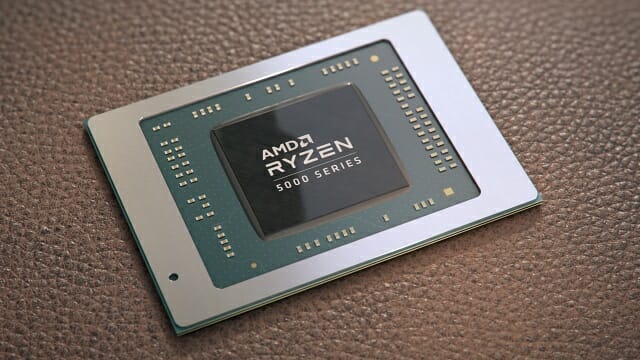
Following the desktop Ryzen 5000 processor (developed by’Vermeer’) that AMD launched last year, it will put the Ryzen 5000 series (developed name’Cezanne’) processor for laptops into the market.
AMD is planning to expand its market share in the low-end and mid-range notebook markets with up to twice the number of cores and price/performance compared to the same-class Intel notebook core processor. Major PC makers are also planning to release a large number of new laptops equipped with the Ryzen 5000 series from the end of this month.
■ Desktop-notebook chip release interval shortened to 3 months
It was in May of last year that AMD released its predecessor, the Ryzen 4000 series (Renoir). After the launch of the Ryzen 3000 series for desktops (developed by’Matis’) based on the same Zen 2 architecture in July 2019, 10 months later, the product for laptops was released.

On the other hand, for the Ryzen 5000 series, a desktop product (Vermeer) was released last November, and a notebook product (Cezanne) was released at the end of this month. The interval between launches has been drastically reduced to three months.
An AMD official explained the reason why the launch interval was only 3 months in an online preliminary briefing conducted for reporters in each country earlier this month.

“At the time of designing the Ryzen 4000 processor for laptops, it was designed in consideration of the application of the Zen3 architecture, and through this, the processor and some blocks in the existing product were changed from Zen2 to Zen3 and updated.”
■ “It is possible to use the original design of the PC manufacturer”
AMD explains that the pin configuration that actually connects the processor and the laptop motherboard is the same for the Ryzen 4000 series and the Ryzen 5000 series.
If this structure is adopted, PC makers can release new products by replacing only the processor while using the main board, display, and various equipment designed for laptops last year. Therefore, product development period and cost are shortened.
In particular, the price fight is fierce for entry-level notebooks, where AMD Ryzen processors have recently secured an edge. PC makers have no choice but to focus on processors that can secure price competitiveness by releasing products at a small price.
■ “Single thread performance improved by 23% compared to the previous generation”
The Ryzen 5000 processor for laptops is based on the existing 4000 series processors, but there are many improvements.

An AMD official said, “We have increased the cache capacity inside the processor from 8MB to 16MB, and we have improved the cache access time by tying up to 8 cores at a time, which was previously tied to 4 cores. Through this, we have maximized single-threaded (1 core) performance. It’s improved by 23%.”
“The memory controller has been updated to support LPDDR4 and has improved power efficiency. The battery operation time has increased by up to 2 hours compared to last year. This effect can be achieved by simply changing the processor in the laptop designed last year.”
■ Built-in graphics chipset improves operating clock
The Ryzen 5000 series for notebooks has succeeded in bringing the Zen3 architecture to market quickly thanks to its foundational design with two generations in mind. The Tiger Lake H processor for laptops that will produce games and contents that Intel will release at the end of the first quarter also succeeded in checking in advance with HS/HX processors.

However, this strategy doesn’t just have advantages. As only the processor core part was replaced quickly, the performance improvement of the built-in graphics chipset (Radeon Vega Graphics), which AMD always put up as an advantage, was lowered from priority. This time, I had to be content with raising the working clock.
Related Articles

New Year’s Notebook Graphics Chipset Market to Continue Strong Nvidia

Pat Gelsinger to rebuild’Team Intel’ from next month

[CES 2021] Lenovo unveils gaming laptops such as the Region Slim 7

[CES 2021] AMD Lisasu “‘Ryzen 5000’, performance superior to competitors”
Aimed at laptops that emphasize portability such as slim laptops and convertibles, the U-series also applied the previous architecture, Zen2, to a processor with an odd numbered second digit in the model name.

An AMD official said, “Performance means everything. By generation, the Ryzen 7 4700U processor was 8 cores and 8 threads, but the Ryzen 7 5700U processor operates with 8 cores and 16 threads. There is also an improvement in graphics performance. Performance is better than the architecture generation. Please pay attention to the improvement,” he explained.
